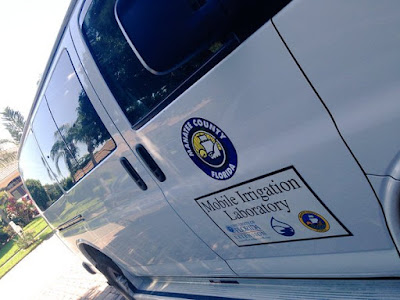By Natalie Nelson
For the past 9 years, a collective of professional societies representing earth and space sciences, or “geosciences,” has invited scientists to travel to our nation’s capital and participate in Geosciences Congressional Visits Day (Geo-CVD). Geo-CVD aims to connect scientists with policymakers on the Hill in order to increase legislators’ awareness and appreciation of geoscience and science research. You might be wondering, what exactly falls under the umbrella of geoscience? Answer: anything related to the dynamics of earth and space! This includes, but is not limited to, the disciplines of geology, meteorology, climatology, oceanography, and – most relevant to this crowd – hydrology and water resources. As a PhD student and researcher studying Hydrologic Sciences through UF’s Agricultural and Biological Engineering Department, I’m also a geoscientist.
For the past 9 years, a collective of professional societies representing earth and space sciences, or “geosciences,” has invited scientists to travel to our nation’s capital and participate in Geosciences Congressional Visits Day (Geo-CVD). Geo-CVD aims to connect scientists with policymakers on the Hill in order to increase legislators’ awareness and appreciation of geoscience and science research. You might be wondering, what exactly falls under the umbrella of geoscience? Answer: anything related to the dynamics of earth and space! This includes, but is not limited to, the disciplines of geology, meteorology, climatology, oceanography, and – most relevant to this crowd – hydrology and water resources. As a PhD student and researcher studying Hydrologic Sciences through UF’s Agricultural and Biological Engineering Department, I’m also a geoscientist.
This year, I applied to
partake in Geo-CVD through the American Geophysical Union, and was ultimately
invited to participate! In addition to being involved with all of the science
policy goodness, I “took over” the AGU Instagram account as a #guestgrammer to give its followers
a glimpse into Geo-CVD happenings. Some of those posts are included below, but
you can also check them out directly @americangeophysicalunion.
Day 1: Communicating with Congress Workshop
Geo-CVD includes two
parts: a half-day workshop to inform participating scientists of current
legislation and the ways of the Hill, followed by a full day of meetings with
congressional offices. At this workshop, we learned that each meeting on the
Hill includes a message, asks, and leave-behinds. The message describes the driving motivation for the visit. Asks are specific
actionable requests of policymakers, such as creation or co-sponsorship of
legislation to address a particular need. Finally, leave-behinds include flyers and informational materials
that can be left with the office for future reference.
For Geo-CVD, we were
armed with a message, asks, and leave-behinds (including one leave-behind I
made on Florida’s Water Resources:
Pertinent Issues and References). Our message
was that strong and sustained federal investments in geoscience will support
resilient communities, strengthen our global and economic competitiveness,
enhance national security, and sustain a highly skilled workforce. Our ask was for congress to
support strong federal investments in geoscience research and education, and we
also asked that members of the House join the newly-formed House Earth and Space Science Caucus, and members of the Senate sign as co-sponsors on the
Earth Science Week Resolution.
Day 2: To the Hill!
We split into
geographically-specific teams and made our way to Capitol Hill. Team Florida
turned out to be a one-woman show (me!). With the company of Brittany Webster, Public Affairs
Specialist, and George Marino, Public Affairs Intern, of AGU, I made my way to the offices of Florida
Senators Bill Nelson and Marco Rubio, the Senate Committee on Commerce,
Science, and Transportation, and Florida Representatives Alcee Hastings, Ted
Yoho, and David Jolly. We mostly met with legislative aides focusing on environment
and energy policy, and met with Representatives Ted Yoho and David Jolly
directly.
While going from office
to office, I quickly realized how important it is for scientists to visit with
the men and women in charge of appropriating and authorizing federal funding
for science research, and creating policies that are (hopefully) informed by our
objective and non-partisan science. The need for engaging both sides of the
aisle on science issues is great, and there are no better stewards for science
than scientists themselves! You don’t have to go to DC to advocate for science
- a simple phone call carries more weight than you would probably expect.
One Legislative Assistant (from a non-Florida office) shared with us that his
office receives almost no calls from constituents concerned about issues
related to science and funding for scientific research, and that this problem was not unique. Let’s change this!
If you’re interested in
sharing your science with policymakers on the Hill, AGU hosts three Congressional Visits Days (CVD) per year – Climate Science CVD (Februrary) AGU CVD
(April), and Geo-CVD (September). Apply!







